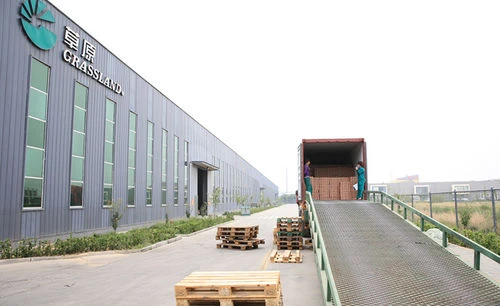Current location:heavy duty cut off discs >>Text
heavy duty cut off discs
disc for cutting stone16919People have read
IntroductionThe Evolution and Advantages of Flexible Grinding Technology In the realm of manufacturing and mater...

The Evolution and Advantages of Flexible Grinding Technology In the realm of manufacturing and material processing, the quest for efficiency, precision, and adaptability has long been a driving force behind the development of various grinding technologies. Among these, flexible grinding stands out as a transformative approach that responds to the diverse needs of modern industry. This article explores the evolution, principles, and advantages of flexible grinding technology, highlighting its significance in enhancing productivity and manufacturing flexibility. Understanding Flexible Grinding Flexible grinding refers to a set of grinding techniques designed to accommodate varying workpiece sizes, shapes, and materials while maintaining high efficiency and accuracy. Unlike traditional grinding methods, which often require dedicated tooling and setup for each specific task, flexible grinding allows for quick adjustments and modifications. This adaptability is crucial in industries where product diversity is increasing, and time-to-market is critical. The core of flexible grinding technology lies in its use of advanced CNC (computer numerical control) systems. These systems enable automatic adjustments to grinding parameters, such as speed, depth of cut, and tool path, according to the specific requirements of each workpiece. As a result, manufacturers can achieve a higher level of precision and a reduced cycle time, making the processes more cost-effective. The Evolution of Grinding Techniques Historically, grinding was a labor-intensive process that often required significant manual intervention. However, with the advent of automation and advancements in machine tools, grinding techniques have evolved. The introduction of CNC technology in the late 20th century marked a significant turning point, allowing for enhanced control over grinding operations. As industries began to demand more complex geometries and tighter tolerances, the need for more flexible grinding solutions became apparent. Consequently, manufacturers invested in multi-tasking machines and integrated systems that could perform various grinding operations without extensive reconfiguration. Innovations such as robotic automation and adaptive control systems have further enhanced the capabilities of flexible grinding. flexible grinding Key Advantages of Flexible Grinding 1. Increased Efficiency One of the primary benefits of flexible grinding is its ability to improve efficiency. By minimizing setup times and enabling quick changeovers between different workpieces, manufacturers can produce a broader range of products in a shorter period. This is particularly advantageous in industries where rapid production is essential. 2. Higher Precision Flexible grinding systems often utilize advanced sensors and feedback mechanisms, allowing for real-time adjustments based on workpiece characteristics. This level of precision ensures that manufacturers can meet stringent quality standards while reducing the likelihood of defects. 3. Cost-effectiveness While the initial investment in flexible grinding technology may be significant, the long-term savings in labor, materials, and time can be substantial. By reducing waste and improving throughput, businesses can achieve a faster return on investment. 4. Enhanced Product Variety As consumer preferences evolve, demand for diverse products increases. Flexible grinding allows manufacturers to adapt to these changing demands swiftly, enabling them to offer customized solutions without requiring extensive retooling. 5. Environmental Sustainability Flexible grinding technologies often result in reduced energy consumption and lower material waste, contributing to more sustainable manufacturing practices. By optimizing the grinding process, businesses can not only save costs but also minimize their environmental footprint. Conclusion In conclusion, flexible grinding technology represents a significant advancement in manufacturing processes, offering myriad advantages in terms of efficiency, precision, and adaptability. As industries continue to evolve and demand for diverse products grows, the importance of flexible grinding will only increase. Manufacturers embracing this technology will be well-positioned to meet the challenges of a dynamic marketplace, ensuring they remain competitive in the global economy. In an age where innovation is key, flexible grinding stands as a testament to the potential of adapting traditional processes for the future.
Tags:
Latest articles
Mått och typer av skärskivor för olika användningsområden
heavy duty cut off discsMått på Skärscheman Inom industrin och byggsektorn är skärscheman en avgörande del av materialbearbe...
Read More
Choosing the Right Angle Grinder Wheel for Stone Cutting and Polishing
heavy duty cut off discsChoosing the Right Angle Grinder Wheel for Stone Work When it comes to working with stone, whether f...
Read More
Effektiv slippekapasitet med 4% 201% 202% flap skive teknologi
heavy duty cut off discsFlap disks En viktig komponent i moderne materialbehandling I dagens industri er det en stadig økend...
Read More
Popular articles
- Cutting Disc for Stainless Steel Best Options and Tips
- Understanding and Utilizing Type 29 Flap Discs for Efficient Metal Finishing and Grinding
- steel cutting disc 230mm
- Pearl Greenback flap disc
- can i use metal cutting discs on wood
- High-Quality 4-Inch Metal Grinding Wheel for Efficient Grinding and Cutting Tasks
Latest articles
-
Metalowa tarcza do cięcia stosowana do pił elektrycznych
-
multi purpose cutting disc
-
Choosing the Best Tools for Stainless Steel Grinding and Cutting
-
Dischi a flusso Emery per la lavorazione e finitura dei materiali abrasivi
-
Metal Wheel Grinders for Efficient and Precise Material Grinding Solutions
-
Optimal Cut-Off Wheels for Aluminum Cutting Precision and Efficiency